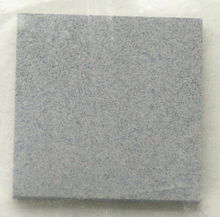 Sintered silicon nitride ceramic
| |
| Names | |
|---|---|
| Preferred IUPAC name
Silicon nitride | |
| Other names
Trisilicon tetranitride,[1]
Nierite | |
| Identifiers | |
3D model (JSmol)
|
|
| ChemSpider | |
| ECHA InfoCard | 100.031.620 |
| EC Number |
|
| MeSH | Silicon+nitride |
PubChem CID
|
|
| UNII | |
CompTox Dashboard (EPA)
|
|
| |
| |
| Properties | |
| Si3N4 | |
| Molar mass | 140.283 g·mol−1 |
| Appearance | grey, odorless powder[2] |
| Density | 3.17 g/cm3[2] |
| Melting point | 1,900 °C (3,450 °F; 2,170 K)[2] (decomposes) |
| Insoluble[2] | |
Refractive index (nD)
|
2.016[3] |
| Thermochemistry[4] | |
Std molar
entropy (S⦵298) |
101.3 J·mol−1·K−1 |
Std enthalpy of
formation (ΔfH⦵298) |
−743.5 kJ·mol−1 |
Gibbs free energy (ΔfG⦵)
|
−642.6 kJ·mol−1 |
| Hazards | |
| Occupational safety and health (OHS/OSH): | |
Main hazards
|
[5] |
| Related compounds | |
Other anions
|
silicon carbide, silicon dioxide |
Other cations
|
boron nitride, carbon nitride |
Except where otherwise noted, data are given for materials in their standard state (at 25 °C [77 °F], 100 kPa).
| |
Silicon nitride is a chemical compound of the elements silicon and nitrogen. Si
3N
4 (Trisilicon tetranitride) is the most thermodynamically stable and commercially important of the silicon nitrides,[6] and the term ″Silicon nitride″ commonly refers to this specific composition. It is a white, high-melting-point solid that is relatively chemically inert, being attacked by dilute HF and hot H
3PO
4. It is very hard (8.5 on the mohs scale). It has a high thermal stability with strong optical nonlinearities for all-optical applications.[7]
- ^ "Silicon nitride (compound)". PubChem. Retrieved 2023-06-04.
- ^ a b c d Haynes, William M., ed. (2011). CRC Handbook of Chemistry and Physics (92nd ed.). Boca Raton, FL: CRC Press. p. 4.88. ISBN 1-4398-5511-0.
- ^ Refractive index database. refractiveindex.info
- ^ CRC handbook of chemistry and physics : a ready-reference book of chemical and physical data. William M. Haynes, David R. Lide, Thomas J. Bruno (2016-2017, 97th ed.). Boca Raton, Florida. 2016. ISBN 978-1-4987-5428-6. OCLC 930681942.
{{cite book}}: CS1 maint: location missing publisher (link) CS1 maint: others (link) - ^ ITEM # SI-501, SILICON NITRIDE POWDER MSDS Archived 2014-06-06 at the Wayback Machine. metal-powders-compounds.micronmetals.com
- ^ Mellor, Joseph William (1947). A Comprehensive Treatise on Inorganic and Theoretical Chemistry. Vol. 8. Longmans, Green and Co. pp. 115–7. OCLC 493750289.
- ^ López-Suárez, A.; Torres-Torres, C.; Rangel-Rojo, R.; Reyes-Esqueda, J. A.; Santana, G.; Alonso, J. C.; Ortiz, A.; Oliver, A. (2009-06-08). "Modification of the nonlinear optical absorption and optical Kerr response exhibited by nc-Si embedded in a silicon-nitride film". Optics Express. 17 (12): 10056–10068. Bibcode:2009OExpr..1710056L. doi:10.1364/OE.17.010056. ISSN 1094-4087. PMID 19506657.